We asked some paleontologists to tell you about what they do and study, and what they love about fossils.
-
Article 1: Andrew R. C. Milner, St. George Dinosaur Discovery Site at Johnson Farm, Utah
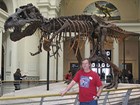
Don't do what I did in terms of school! Read more
-
Article 2: Don Prothero, Natural History Museum of Los Angeles County
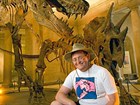
I was fortunate at beginning my graduate career at the American Museum of Natural History in 1976, when the enormous unstudied Frick Collection of fossil mammals finally became available for study. There is a whole floor of horses, a whole floor of rhinos, a whole floor of camels, a whole floor of mastodons and mammoths, and three floors of everything else. It had been collected since the 1930s and remained unstudied until the 1970s. Suddenly, we had hundreds of skulls and... Read more
-
Article 3: William (Bill) G. Parker, Petrified Forest National Park
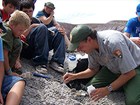
I started my college work at a small community college in Mesa, Arizona. My favorite class was Historical Geology, which I took at this community college. The instructor was passionate about geology and took me on my first fossil (invertebrates) collecting trip. I was hooked. Read more
-
Article 4: Erica Clites, University of California Museum of Paleontology
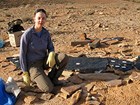
Do you have any advice for aspiring paleontologists? Spend as much time in the field as you can! You will learn to apply the concepts you studied in class, and each new place you visit will help you recognize and interpret similar rocks in the future! Read more
-
Article 5: Scott Foss, Bureau of Land Management
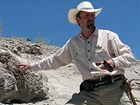
Volunteering at a museum, the first time I successfully joined two fossil fragments was important to me. I realized that I had connected pieces that had been separated for nearly 200 million years. That was the first time I contributed to our ever-growing knowledge of the past. Read more
-
Article 6: Jim Kirkland, Utah Geological Survey
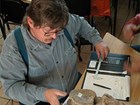
Learn to write well, keep a journal, and keep your eyes open to the world around you, recording what you see in sketches and words. Learning to distill or simplify your observations is critical in any area of natural history like paleontology... Read more
-
Article 7: Hans Deitre-Sues, National Museum of Natural History of the Smithsonian Institution
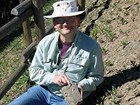
My parents gave me a book on prehistoric life when I was four years old. The strange, long-extinct creatures pictured in that book enthralled me and I knew that I wanted to spend my life finding out more about them. Read more
-
Article 8: Dr. Alan L. Titus, Bureau of Land Management
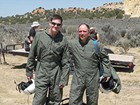
My father made a collection of extremely beautiful Devonian age trilobites (Phacops rana) while he was teaching at his first university job in Toledo, Ohio. I was fascinated by these "ghostly" monuments to a completely extinct group of organisms. I imagined what it would be like to hold a living trilobite in my hands. That's where my fascination with extinct life forms and ecosystems was born. Read more
-
Article 9: Thomas Holtz, University of Maryland
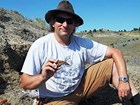
Once, on the first day of the field season I was sitting on a hill trying to understand the local geology, then noticed I was sitting among a bunch of fragments of dinosaur eggshell! Read more
-
Article 10: Maria Rodriguez, Glen Canyon National Recreation Area
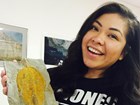
I attended California State University Dominguez Hills where I majored in Earth Science. My favorite classes were based around outdoor fieldwork. I loved anything that dealt with getting dirty and muddy. The classes I enjoyed the most were Field Mapping, Advance Research, and Earth’s History & Evolution. Read more
-
Article 11: Karen Chin, University of Colorado Boulder
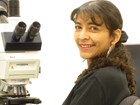
I make a lot of my discoveries when I am looking through my microscope. One of my most memorable experiences was seeing fossilized muscle tissues in a well-preserved tyrannosaur coprolite under the microscope. It was amazing to think that I was observing soft tissues that had been eaten by a dinosaur around 75 million years ago! Read more
-
Article 12: David K. Elliott, Northern Arizona University
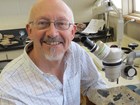
I was always interested in natural history and the outdoors but became interested in geology when one of my teachers brought some rocks and minerals into the class when I was about ten. At that time my family would go to the coast for a summer vacation and I started looking at the chalk cliffs and finding fossils. Somehow my interest was sparked and I decided that studying fossils was what I wanted to do. Read more
-
Article 13: John-Paul Hodnett, New Mexico Museum of Natural History and Science
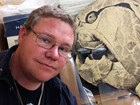
To the aspiring paleontologist I would recommend to read as much as you can. You should go outside and observe the world around you and practice writing down and/or drawing what you are seeing. Learning skills from the fine arts can be invaluable as they can help teach you to frame and express your ideas which is just as important in the sciences as collecting and interpreting data. Read more
-
Article 14: Julie Meachen, Des Moines University
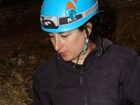
I didn’t realize I wanted to be a paleontologist until I was in college. I volunteered in the vertebrate paleontology collection in my sophomore year and as soon as I pulled open the drawers in the collection and looked inside, I was sold for life. Read more
-
Article 15: Roy E. Plotnick, University of Illinois at Chicago
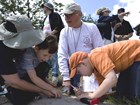
Two of my favorite classes were Stratigraphy, which taught me how we can tell time and environment with ancient rocks, and Marine Invertebrate Zoology, where I looked at the living relatives of many of the things we find as fossils. Read more
-
Article 16: Scott Sampson, Denver Museum of Nature & Science
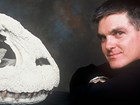
The bulk of my research has focused on the ecology and evolution of dinosaurs that lived in the Late Cretaceous, near the end of the Mesozoic Era. I've conducted fieldwork in Kenya, Zimbabwe, South Africa, Madagascar, Mexico, the United States, and Canada. Read more
-
Article 17: Vincent L. Santucci, National Park Service
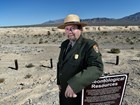
Every day is different with new challenges and discoveries. One day I may be involved in the review of a scientific report and then provide a park support with a fossil theft or vandalism investigation. It is a great privilege and honor to help care for the fossil record preserved in our national parks. Read more
-
Article 18: Eric Scott, Cogstone Resource Management, Inc.
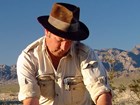
As you'd expect, I really loved the classes where bones and fossils were the focus - osteology, vertebrate morphology, paleoanthropology, and so forth. But I supplemented my schooling by volunteering at natural history museums, and that’s actually where a lot of my "hands on" learning took place - and where I learned to love learning. Read more
-
Article 19: Kathleen Springer, U.S. Geological Survey
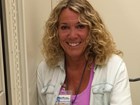
I work all over the deserts of the American Southwest. At the moment, my work is concentrated on Tule Springs Fossil Beds National Monument in southern Nevada. Tule Springs is the linchpin of our wetland studies and there we have shown that the “fossil beds” that make up Tule Springs were marshes, meadows, and stream ecosystems that were home to mammoths, horses, camels, bison, sabre-toothed cats, and dire wolves. Read more
-
Article 20: Glen W. Storrs, Cincinnati Museum Center
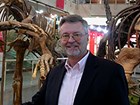
Traveling the world to study fossils in other museums or collect them in the field has always been a favorite activity of mine. At times, I've been deep in the bowels of a venerable museum, or clamoring about its public exhibits. At others, I've fought the harsh conditions of a fossil site, whether desert or shoreline, to unearth a new discovery. Read more
